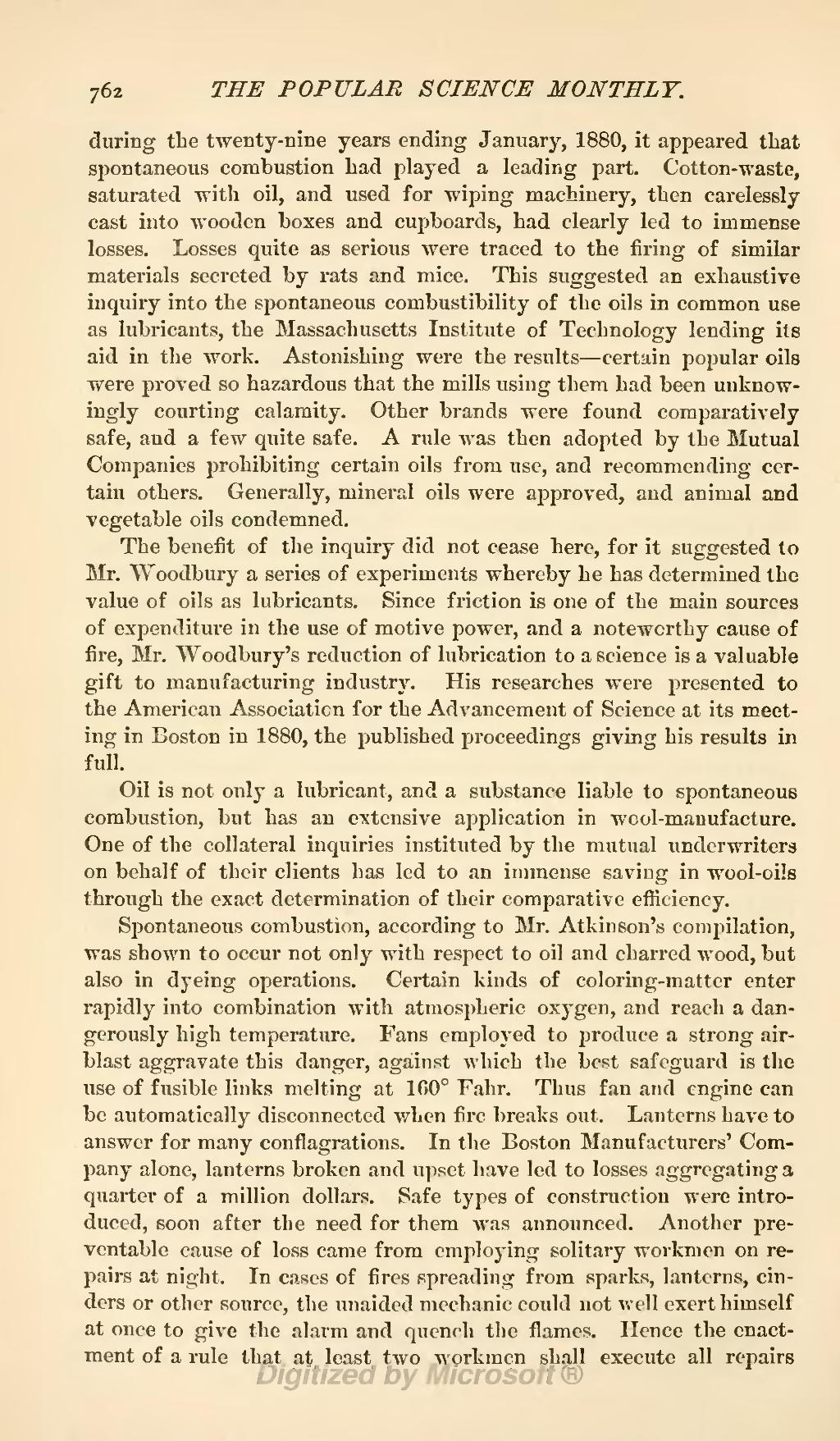during the twenty-nine years ending January, 1880, it appeared that spontaneous combustion had played a leading part. Cotton-waste, saturated with oil, and used for wiping machinery, then carelessly cast into wooden boxes and cupboards, had clearly led to immense losses. Losses quite as serious were traced to the firing of similar materials secreted by rats and mice. This suggested an exhaustive inquiry into the spontaneous combustibility of the oils in common use as lubricants, the Massachusetts Institute of Technology lending its aid in the work. Astonishing were the results—certain popular oils were proved so hazardous that the mills using them had been unknowingly courting calamity. Other brands were found comparatively safe, and a few quite safe. A rule was then adopted by the Mutual Companies prohibiting certain oils from use, and recommending certain others. Generally, mineral oils were approved, and animal and vegetable oils condemned.
The benefit of the inquiry did not cease here, for it suggested to Mr. Woodbury a series of experiments whereby he has determined the value of oils as lubricants. Since friction is one of the main sources of expenditure in the use of motive power, and a noteworthy cause of fire, Mr. Woodbury's reduction of lubrication to a science is a valuable gift to manufacturing industry. His researches were presented to the American Association for the Advancement of Science at its meeting in Boston in 1880, the published proceedings giving his results in full.
Oil is not only a lubricant, and a substance liable to spontaneous combustion, but has an extensive application in wool-manufacture. One of the collateral inquiries instituted by the mutual underwriters on behalf of their clients has led to an immense saving in wool-oils through the exact determination of their comparative efficiency.
Spontaneous combustion, according to Mr. Atkinson's compilation, was shown to occur not only with respect to oil and charred wood, but also in dyeing operations. Certain kinds of coloring-matter enter rapidly into combination with atmospheric oxygen, and reach a dangerously high temperature. Fans employed to produce a strong air blast aggravate this danger, against which the best safeguard is the use of fusible links melting at 160° Fahr. Thus fan and engine can be automatically disconnected when fire breaks out. Lanterns have to answer for many conflagrations. In the Boston Manufacturers' Company alone, lanterns broken and upset have led to losses aggregating a quarter of a million dollars. Safe types of construction were introduced, soon after the need for them was announced. Another preventable cause of loss came from employing solitary workmen on repairs at night. In cases of fires spreading from sparks, lanterns, cinders or other source, the unaided mechanic could not well exert himself at once to give the alarm and quench the flames. Hence the enactment of a rule that at least two workmen shall execute all repairs

